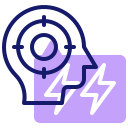
AI and the Transformation of GDP
Artificial Intelligence is fundamentally reshaping the global economic landscape, driving change across industries and redefining the meaning and measurement of Gross Domestic Product (GDP). Enhanced computational power, predictive analytics, and automation are enabling businesses and governments to operate more efficiently, innovate faster, and create entirely new markets. The integration of AI technologies not only amplifies economic output but also prompts fresh discussions about productivity, workforce transformation, and the equitable distribution of wealth. As nations adapt to this digital revolution, understanding the interplay between AI and GDP becomes crucial for navigating the future of economic growth and policy making.
Redefining Productivity in the Age of AI
The development and deployment of AI-driven automation tools are streamlining workflows, minimizing human error, and increasing production capacities across numerous industries. Robotic process automation, predictive maintenance, and intelligent scheduling systems are cutting costs and reducing downtime, leading to consistently higher outputs. As repetitive and time-consuming tasks become automated, human resources are reallocated towards creative and strategic initiatives, further elevating economic productivity. This transformation underlines a new era where GDP growth is less tethered to labor hours and more aligned with technological capabilities.

The Impact on Labor Markets and Economic Distribution
The rise of AI prompts a significant transformation in workforce composition, with demand shifting from routine manual jobs to roles requiring higher cognitive skills and digital literacy. As machines assume more repetitive tasks, workers are expected to upskill and reskill to remain competitive in a constantly evolving job market. Education systems, professional training programs, and public policies are under pressure to adapt rapidly to this new reality. The pace and effectiveness of this transition will influence GDP growth by determining how efficiently labor reallocates to high-value activities.

GDP calculations have historically focused on tangible goods and clearly defined services, but AI-driven economies produce a significant share of their value from intangible assets. Software, algorithms, and data have become core components of modern production and consumption, yet their valuation remains complex and sometimes imprecise. This disconnect can result in underreporting the actual gains brought by AI, leading to policy decisions that may not reflect the digital economy’s growing importance.

AI-enabled business models often blur the lines between producers and consumers, as platforms allow users to co-create value in unprecedented ways. Crowdsourcing, gig work, and user-generated content challenge traditional concepts of economic output and value distribution. Accurate measurement of AI’s contribution requires a nuanced approach that recognizes these new forms of economic engagement. Addressing these complexities is critical for developing policies and frameworks that support sustainable GDP growth in the digital age.

Transforming GDP measurement in response to AI’s influence has significant policy and regulatory implications. Governments must modernize statistical tools and methodologies to capture the full range of economic activities enabled by AI. This includes recognizing productivity gains from automation, appreciating the value of digital services, and understanding how AI reshapes trade and investment patterns. Effective policy adaptation is essential for harnessing AI’s economic potential while ensuring fair, inclusive, and transparent growth outcomes.
